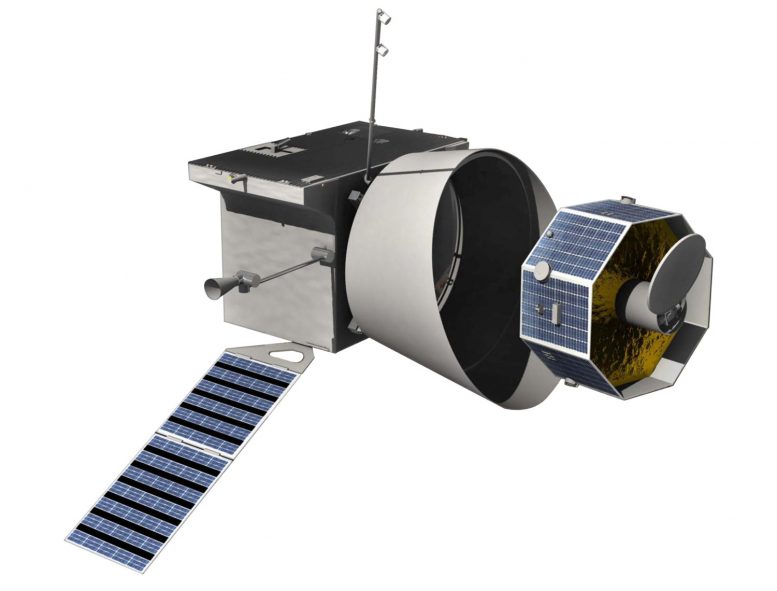
BepiColombo, an ESA mission in cooperation with Japan, will explore Mercury, the planet closest to the Sun. Credit: ESA
Listen to the sound of BepiColombo’s Earth flyby as captured in five recordings taken by two instruments aboard the Mercury Planetary Orbiter, one of the two orbiters comprising the joint European/Japanese Mercury exploration mission.
The BepiColombo flyby on April 10, 2020, was the first of overall nine gravity-assist maneuvers that tighten the spacecraft’s trajectory around the Sun as it closes in on its destination orbit around the smallest and least explored planet of the Solar System.
Approaching Earth: Italian Spring Accelerometer
A sonification of data recorded by the Italian Spring Accelerometer (ISA) aboard the BepiColombo spacecraft as it neared Earth ahead of the April 2020 flyby. The data in the recording were obtained as the spacecraft approached the planet from a distance of 256,393 km to 129,488 km (159,315 miles to 80,460 miles). Eight Hours of measurements are condensed into a minute of audio. The original frequency of the dataset, inaudible to humans, had to be enhanced by the team from Italy’s National Institute for Astrophysics (INAF) in order to create the audio track.
Earth within reach: Italian Spring Accelerometer
Data used to create this sonification were obtained by the Italian Spring Accelerometer (ISA) instrument as BepiColombo approached the planet’s surface from the distance of 27,844 km to 13,107 km (17301.4595 miles to 8,144 miles). The closest point of the flyby, which enabled BepiColombo to harness Earth’s gravity to tighten its trajectory around the Sun, was at the distance of 12,689 km from the planet’s surface. The original frequency of the dataset, inaudible to humans, had to be enhanced by the team from Italy’s National Institute for Astrophysics (INAF) in order to create the audio track. The data was condensed so that one hour of measurements would equal about a minute of audio.
In Earth’s shadow: Italian Spring Accelerometer
ISA data in this sonification capture the 34-minute period of BepiColombo’s April 2020 Earth flyby when the spacecraft flew through the Earth’s shadow with no direct view of the Sun. The spacecraft had already passed its closest approach when it entered the shadow. The recording starts at the distance of 13,460 km (8,364 miles) away from the Earth’s surface. The spacecraft subsequently enters eclipse at the distance of 16,496 km (10,250 miles), which can be heard in the recording, and exits it at 24,861 km (15,448 miles). The recording ends when the spacecraft reaches the distance of 31,785 km (19,750 miles).
The sound of Earth’s magnetic field — MPO magnetometer
The audio is a sonification of data captured by the MPO-MAG instrument as BepiColombo flew through Earth’s magnetosphere. The spacecraft encountered the so-called bow shock at the outer edge of the magnetosphere where the Earth’s magnetic field interacts with the solar wind. It then passed through the magnetosheath, a turbulent region still considerably affected by the cosmic plasma, and crossed the magnetopause, the boundary after which the magnetic field of Earth dominates. The audio compresses 8 hours of recorded data into a 26-second audio track.
Sound of Earth magnetic field with flywheels — MPO magnetometer
This audio is based on the same dataset as the previous sonification. In this case, however, the sound of BepiColombo’s reaction wheels, which keep the spacecraft oriented in the correct direction, has not been filtered out and can be clearly audible especially after the spacecraft passes the turbulent region.
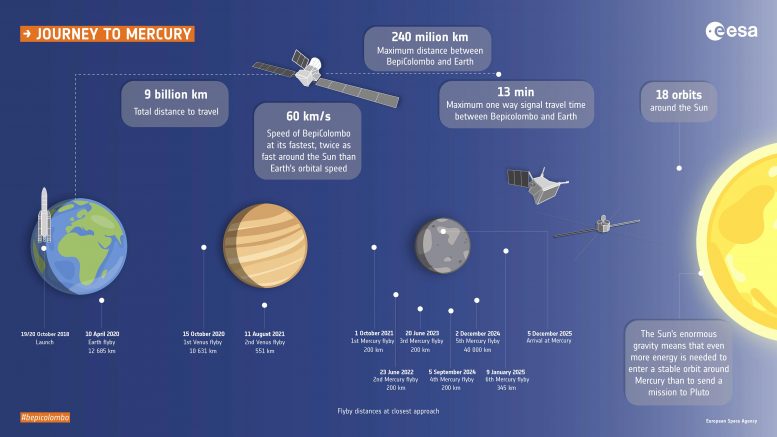
BepiColombo was launched on an Ariane 5 from Europe’s Spaceport in Kourou, French Guiana, on October 20, 2018. It will use the gravity of Earth, Venus and Mercury in combination with the thrust provided by electric propulsion, to reach Mercury.
This graphic highlights the flyby schedule, and facts associated with the journey. Credit: ESA

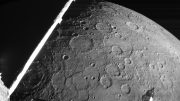
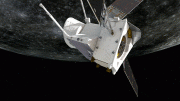
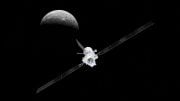


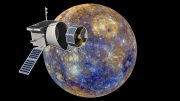
Be the first to comment on "Eerie Outer Space: Listen to the Sounds of BepiColombo’s Earth Flyby"